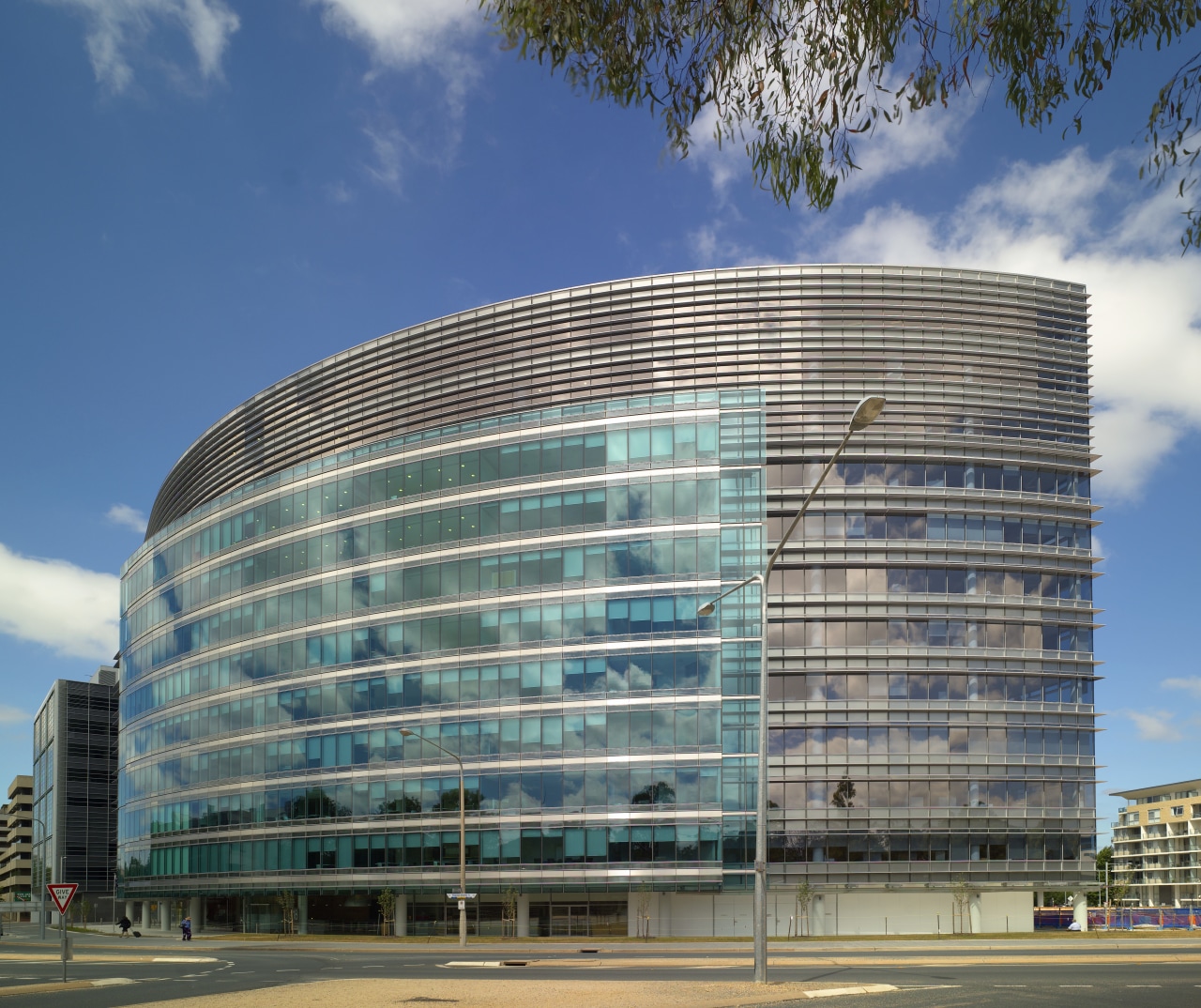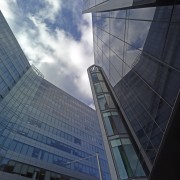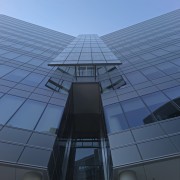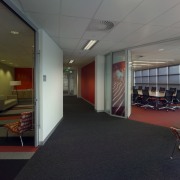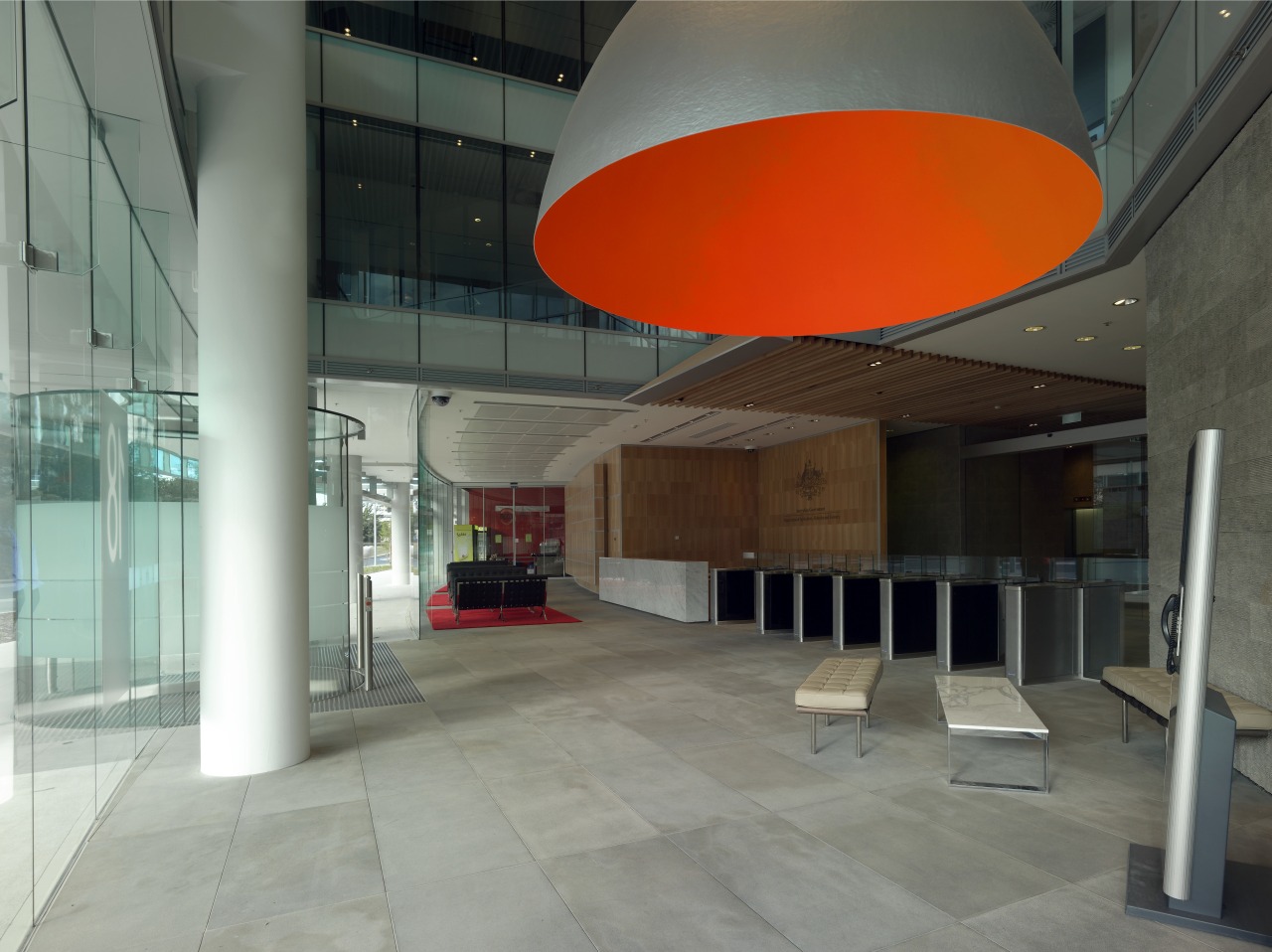Tomorrow calling
Canberra is renowned for its formal street layout and classic building profiles 18 Marcus Clarke accentuates the former but departs radically from the latter
Australia's capital is famed for the strong, formal town-planning structure that American architect Walter Burley Griffin designed for the city in 1912. The renowned architect's individualistic vision was intended to create a civic formality and encourage business dynamism appropriate to the capital city.
The Parliamentary Triangle which defines the symbolic, political and business heart of Canberra was integral to Griffin's urban strategy. This links Canberra's City Hill business precinct to the defence headquarters at Russell and Parliament House, the seat of Government.
While City Hill's regimented axes, and wheel-and-spoke hexagonal patterning have remained, the business dynamism envisaged for the district had never been fully realised.
Today, however, major developer-driven architectural changes are reinvigorating Canberra's triangular-shaped heart. 18 Marcus Clarke and 7 London Circuit are two flagship buildings for the cause the former jointly developed by Leighton Properties and Mirvac under the umbrella of Universal Portfolio Services, and the latter by Leighton Properties in its own right. Leighton was the development manager for both buildings, which were designed by architectural firm Woods Bagot and built by Thiess.
The taller of the two structures, 18 Marcus Clarke comprises 12 levels of commercial A-grade office space behind a contemporary facade, says the spokesperson for Leighton Properties David Patmore.
"We first considered this location because it was an inner-city address, abutting the Parliamentary Triangle, that was under-utilised. The site had previously been used for car parking," says Patmore. "The National Capital Plan, which identified ways the Griffin legacy could be strengthened, had an ongoing focus of bringing new vitality to the area. In line with this, and recognising Canberra's demand for vibrant, upscale commercial office space, we wanted 18 Marcus Clarke and 7 London Circuit to bring a fresh business dynamism and campus-like social ambience to the precinct."
18 Marcus Clarke's dramatic curved glass curtain wall hugs and accentuates a hexagonal nub within Griffin's original planning lines but, as Patmore explains, Griffin's vision also had vertical dimensions.
"The building heights are intended to defer to the height of Parliament House the most prominent corner of the triangle. 18 Marcus Clarke stretches to the maximum height allowed, further emphasising the hub's positioning with an articulated facade and roof section."
Although 18 Marcus Clarke reinforces Canberra's historic planning, it departs from the city's more traditional building conventions in another manner, says Earle Arney, director of Woods Bagot.
"Canberra's building stock has generally not kept abreast of developments in Australia and abroad," says Arney. "Organisations now realise the value of large, efficient and effective floor plates. Smart end-users understand that the workplace can be used as a tool of business change and seek an environment that will enable them to attract and retain key knowledge workers. There has been a need to reset the benchmark in Canberra. Accordingly, this building has been designed as an urban response to the Griffin legacy, but it is also very much a building that has been designed from the inside-out based upon our research into the workplace. This interwoven approach is legible in the exterior of the building as triple-height wintergardens and break-out areas reveal themselves through the building's skin."
Leighton's David Patmore says attracting a long-term tenant, preferably one keen to pursue an integrated fit-out, was high on the developer's agenda and a driver of the design.
"To attract a large government tenant we wanted to create a campus-like environment, where both the staff and employer found the spaces appealing. The connecting areas between 18 Marcus Clarke and the neighbouring building go some way toward achieving this, as do the informal meeting areas, and ground-floor cafe," says Patmore.
Besides location, open internal dynamics and a strong futuristic aesthetic, 18 Marcus Clarke is designed to appeal on another level sustainability and comprehensive energy efficiency.
"The overall environmental impact of the building has been reduced by optimising the design of the facades, combined with energy-saving technologies employed by the building services," says Arney.
As a result of this highly strategic build, the Commonwealth Department of Agriculture, Fisheries & Forestry (DAFF) has leased all levels of the building, including three levels of underground parking, for a 15-year renewable tenancy.
The same team of developers and architects are now looking to further invigorate the precinct an even larger development is currently being designed for the site opposite 18 Marcus Clarke and 7 London Circuit, called Section 63. Arney says that the challenge of Section 63 is to further the achievements made with the first two buildings and create an integrated campus that is a model of urban consolidation in Australia.
For further details on Leighton Properties, phone (02) 9925 6666. Web: www.leightonproperties.com.au.
For details on Woods Bagot, phone (02) 9249 2500. Or visit the website: www.woodsbagot.com.au.
Story by: Trendsideas
Home kitchen bathroom commercial design
Social agenda
Masculine meets mixed use
At one with the Amazon
